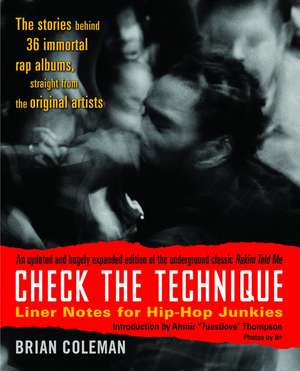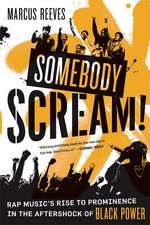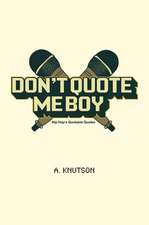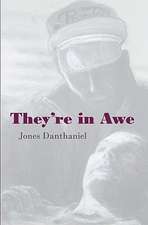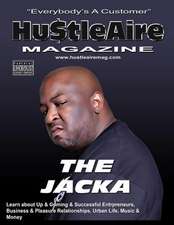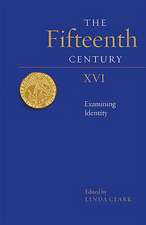Check the Technique: Liner Notes for Hip-Hop Junkies
Autor Brian Colemanen Limba Engleză Paperback – 31 mai 2007
It’s a sad fact: hip-hop album liners have always been reduced to a list of producer and sample credits, a publicity photo or two, and some hastily composed shout-outs. That’s a damn shame, because few outside the game know about the true creative forces behind influential masterpieces like PE’s It Takes a Nation of Millions. . ., De La’s 3 Feet High and Rising, and Wu-Tang’s Enter the Wu-Tang (36 Chambers). A longtime scribe for the hip-hop nation, Brian Coleman fills this void, and delivers a thrilling, knockout oral history of the albums that define this dynamic and iconoclastic art form.
The format: One chapter, one artist, one album, blow-by-blow and track-by-track, delivered straight from the original sources. Performers, producers, DJs, and b-boys–including Big Daddy Kane, Muggs and B-Real, Biz Markie, RZA, Ice-T, and Wyclef–step to the mic to talk about the influences, environment, equipment, samples, beats, beefs, and surprises that went into making each classic record. Studio craft and street smarts, sonic inspiration and skate ramps, triumph, tragedy, and take-out food–all played their part in creating these essential albums of the hip-hop canon.
Insightful, raucous, and addictive, Check the Technique transports you back to hip-hop’s golden age with the greatest artists of the ’80s and ’90s. This is the book that belongs on the stacks next to your wax.
“Brian Coleman’s writing is a lot like the albums he covers: direct, uproarious, and more than six-fifths genius.”
–Jeff Chang, author of Can’t Stop Won’t Stop
“All producers and hip-hop fans must read this book. It really shows how these albums were made and touches the music fiend in everyone.”
–DJ Evil Dee of Black Moon and Da Beatminerz
“A rarity in mainstream publishing: a truly essential rap history.”
–Ronin Ro, author of Have Gun Will Travel
Preț: 133.47 lei
Nou
Puncte Express: 200
Preț estimativ în valută:
25.54€ • 26.53$ • 21.22£
25.54€ • 26.53$ • 21.22£
Carte disponibilă
Livrare economică 14-21 ianuarie 25
Livrare express 28 decembrie 24 - 03 ianuarie 25 pentru 59.67 lei
Preluare comenzi: 021 569.72.76
Specificații
ISBN-13: 9780812977752
ISBN-10: 0812977750
Pagini: 509
Ilustrații: 85 ILLUSTRATIONS THROUGHOUT
Dimensiuni: 188 x 234 x 31 mm
Greutate: 1.06 kg
Editura: Villard Books
ISBN-10: 0812977750
Pagini: 509
Ilustrații: 85 ILLUSTRATIONS THROUGHOUT
Dimensiuni: 188 x 234 x 31 mm
Greutate: 1.06 kg
Editura: Villard Books
Extras
ERIC B. & RAKIM
Paid in Full
(4th & Bway/Island, 1987)
“I came in the door, I said it before/I never let the mic magnetize me no more.”
When you hear those first lines, your whole body starts to shiver. You’re instantly transported to New York, 1986. The verses are so ill that your mom could say them and they’d still move a crowd. And they don’t stop for the duration of Eric B. & Rakim’s unsinkable classic, “Eric B. Is President.” A song like that only comes along maybe twice a decade, and few of them stay with you like the duo’s master tome. Eric B. and Rakim set off a lot of things in 1986–an onslaught of raids on the James Brown sampling archive; a rebirth of anti-party, pro-scientific lyricism; and a 500 percent rise in purchases of dinosaur-choking gold medallions from Bushwick to Bangkok.
Interestingly, William Griffin Jr.–the youngest of three Griffin brothers and better known to hip-hop as Rakim–didn’t figure their booming single (first released on Zakia Records, B-sided with the also mind-blowing “My Melody”) would change hip-hop the way it did. “I had no idea it would impact like that, but maybe that’s because I’m my own worst critic,” Rakim Allah says, adding, “I had already been rhyming for so long at that point that I wasn’t looking to pursue a recording career. To be honest, at the time I was hoping to play football at Stony Brook [University, in Long Island], since my cousin had a scholarship there. I played quarterback and had met with the coach there. He told me to get my grades up and we could talk.” Luckily for hip-hop fans, fate turned Rakim away from the gridiron and
gave the duo a monster hit.
Although he had deep family roots in Brooklyn, William Jr. was born and raised in Long Island’s Wyandanch, New York, and came up through an established hip-hop scene that wasn’t as flashy as New York’s–though skills were most certainly required at the door. “Wyandanch played a big influence in my life,” he says. “There was always block parties and DJs at the park. DJs like Pleasure, Nelson PR, DJ Motor, and DJ Maniac. These guys were around–like, back when I said in ‘Microphone Fiend’ that I was too small to get on the mic. There were a lot of parties in the school gyms. We had a lot going on.” He adds, talking about his New York experiences, “I had lots of family in Brooklyn and cousins in Queens, so I used to go to their cribs and go to the park in Jamaica [Queens]. I’d also make sure I always saw the Cold Crush Brothers. [Grandmaster] Caz was a big influence on me. We’d go to DJ battles in New York all the time, like Mike & Dave Productions. I remember joining in on a rap convention back then, I think it was on 127th Street. Biz Markie was there, I remember that.”
Aside from his cousins and local friends who introduced him to the hip-hop life, he also had an important musical influence in his family: his aunt, legendary R&B vocalist Ruth Brown. “She used to keep her eye on me, babysit me,” he says, also adding that he saw her perform on several occasions in his youth. “Being in that environment, watching her do what she do, that kept me grounded once I got on for myself.” Did the music legend approve of her nephew making hip-hop? “Once she heard my first record she called me up to let me know how much she liked it,” he says. “She told me to keep doing my thing and to stay focused. She definitely appreciated it, because what I was doing was about poetry and rhythm. She respected that.”
Back in his earlier teens, before he picked up a mic and started dropping supreme knowledge, young William flexed behind the turntables as Kid Wizard (he says he started using Rakim in late ’84 or early ’85). “I started DJing before I was rapping. I didn’t know which one to do, so I did both. Back then you had to do everything. You had to break-dance, beatbox, all that,” he recalls. “But after a while a lot of crews were trying to recruit me on the mic, even when I was too young to even hang out. Plus it was always easier to get on the mic than it was to get on somebody’s turntables. Once I started rapping, a lot of people forgot I could even DJ. They started realizing that I had more skill than anyone in the area, and they wanted me.
“Melle Mel was always using big words and ill rhythms, but he’d break it down and get a little political, too, like ‘White Lines’ or the joint he did on Beat Street,” Rakim says, discussing one of his biggest influences on the mic. “He was scientifical with it. Kool Moe Dee and Caz [from Cold Crush] were conscious and lyrical with their skills, and witty, too. I knew that Melle Mel and Caz and Moe always put something into their work, and every time I sat down to write a rhyme I always wanted to make sense and show that I went to school and I took language and social studies and that I knew how to write a book report. That’s the way I took my rhymes, because of those guys. Listening to them coming up was the best thing that could have happened to me.”
Around 1985, as his MC skills were beginning to hit full stride, he made an important trip to the crib of DJ Maniac (a friend of his older brother Stevie). “I went over to his house and made a tape, so when I went to college and cats start yappin’ off about how great they were, I could put in my tape and shut all that talk down,” says Rakim. “I had ninety minutes with different beats and me rapping on the whole thing, all the way through.” That tape was soon heard by an up-and-coming DJ and producer named Eric Barrier through a mutual friend–future record exec Alvin Toney, also from Wyandanch. Eric B. was engineering mobile broadcasts for New York’s WBLS-FM at the time. “Eric was looking for an MC, and Alvin brought him to my crib and we played him the tape that me and Maniac made,” Rakim recalls. The rest, as they say, is history.
“I told Eric that I wasn’t really interested in the rap game, but I said that if he popped something off I’d be a special guest,” Rakim explains. Eric wasn’t so casual about what might go down. He knew they had chemistry and something big could be made of the situation. As such, he started shopping rough demos around, and literally didn’t have to go far before he found their first home: Robert Hill’s Zakia Records. “I think that’s the first place that Eric took our music to,” Rakim says. “Zakia was right around the corner from his mom’s place. She lived on 124th Street, and Zakia was between 124th and 125th on Adam Clayton Powell Boulevard in Harlem. They liked what they heard and we did a deal with them.” With Zakia behind them (“Robert Hill ran the label and took care of studio costs,” Rakim says), they went in the studio and the duo was born–the single even reflected Rakim’s request for “special guest” status: “Eric B. featuring Rakim.”
The Marley Marl—overseen single (technically and nominally Eric B. produced it, but Rakim claims that Marley’s sonic input truly made it what it was), was recorded in late 1985 and hit streets in early 1986. It straight-up sideswiped the hip-hop world, boasting a new sound, a slower tempo, and Rakim dropping quotable line after quotable line. “Whenever I heard a slow track, what would click in my head was that I could put more rhythms and more words into it,” explains Rakim. “I could triple up on words, take the rhythm, syncopate it, and take you where you’ve never been before. That was my little trademark. When a track is fast, there are only so many rhythms and so many words you can throw in four bars.”
After the single’s success, it wasn’t hard to find suitors for an album deal. “4th & Bway kind of bought Zakia,” Rakim explains about the biz angle back in ’86 and ’87. “It was kind of a joint venture. Robert Hill ran into some . . . [pauses] . . . business problems; he got into some trouble with the law. But whatever he was doin’, it didn’t affect me. So our deal with 4th & Bway was nothing bad for my career. Either way, sometimes you don’t need a major label to get you where you need to be.”
The group also benefited from running with a talented crew back in ’86 and early ’87. “At first we was running with the Juice Crew,” Rakim says. “We was doing shows with Shan and Marley, and Fly Ty was booking us. Eric knew Mr. Magic from WBLS and Kool G Rap used to live around the corner from him in Queens, so that’s how we got in with them at first. The Juice Crew guys kept me on my toes. When you hear some hot shit, like what Kane and G Rap was doing back then, you can’t wait to go home and try to top it.”
As anyone who recalls from promo shots and album covers back in the day, Eric B. & Rakim, like many of their peers, wore gold on a level just below Mr. T. “Me and Eric never really competed with wearing gold, because we knew if one of us bought something, the other one would go up the block and buy something too,” Rakim laughs. “If I came through with a piece, he’d go out and get another piece. Eric was getting a new piece like every two weeks. The biggest piece I ever bought was like fourteen thousand dollars back then. A necklace, with diamonds in it. Someone went into this shop and ordered it and then got locked up. It was like eighteen thousand dollars but they were stuck with it, so I got it for less.”
After 4th & Bway signed off on a full album, the duo quickly dispatched eight more classic cuts (six vocals and two DJ workouts) and the ultimate classic Paid in Full was born. “That album to me was like experimenting,” Rakim recalls. “We went to the studio, we laid the beat down, I took the notebook and did the rhymes right there. And that was a wrap. Today I like to perfect and shape it a little bit more. But back then that rawness was what was good about it. We just went in there, we wasn’t shootin’ to do a single, we wasn’t trying to cross over. I was just going into the studio doing what I would do before going to a block party. Give me a beat, I’m gonna write some rhymes to it and I’ma say this shit tonight. Everything now is more like tunnel vision. If you ain’t talkin’ about what everyone else is talkin’ about, it’s a different language.”
As untouchable as the group’s first classic was, Rakim states, “Those were just beats and rhymes that I would always do out in the park.” He also says that although Eric B. got album credit as sole producer, Rakim did a decent portion of the work in the studio. “Most of the tracks on the first and second albums, I done those myself, no question,” he states. “Back then Eric B. wanted to be the businessman, so I said, ‘Okay, you can take care of business, I’m going to stick with this notebook right here.’ So by not getting involved, he was right there telling them [at the record label] to print whatever he wanted them to print on the album cover. That was my mistake. If we did ten tracks on the album, I did like seven of the beats myself. A lot of times they was just old park records. I had a record collection, I had turntables, I had all the break beats.” Regardless of how the credits on the album were given, Eric B.’s musical input was undeniably a big part of the album’s success, and his DJ skills were some of the most innovative heard on wax during that era.
Even though Rakim tends to downplay the depth of the first album, when pressed he will admit to its lyrical importance. “Lyrically I took things from the nursery-rhyme frame of mind, writing things that rhymed and sounded good, and put the ghetto on it,” he explains. “I just wanted people to see what I was talkin’ about, wanted them to see the scenery. So they could put themselves in my place and live out what I was saying. The things I spoke about was things we did in the street, and we wanted people in the street to relate to them.”
He adds, casually, “I wasn’t planning on the rap game, but after the first single, the door opened and I walked in.”
TRACKS
I AIN’T NO JOKE
That was the first single we did for the album itself, and the first video we ever did, too. That sample was just another James Brown record that I used to rhyme off. At first we was going to sample more of it, but then we decided to have Eric just scratch [the horn riff] in. I used that song a long time before I met Eric, so that’s another Rakim banger right there. With the drum programming on the album, our engineer Patrick Adams did a lot of that. I just spoke with him the other day, actually. He’s a real talented cat. I’d basically just take my break beats and ideas in, and he’d sample it up and put the [Roland TR-] 808 on it. Patrick was the guy who first turned me on to the 808. We’d dress up the beats. I titled the song that way because that’s how I wanted people to perceive me on the mic. Back then I tried to think of slogans that somebody would want to put on the side of their car, or say all day. So that was like the ultimate thing you could say.
MY MELODY
That was the first song we ever made. We did that one and Marley Marl made it sound like it was supposed to sound. He played a big role in that record. I always used to rhyme off “Standing on the Top” so we used that. [Author’s note: Rakim likely means Keni Burke’s 1982 R&B hit “Risin’ to the Top.”] We replayed it on keyboard, Marley did a lot of scratchin’, Eric did some scratchin’ too. MC Shan helped engineer it when we finished the mix at the crib. After Marley’s help on that first single, we took it and ran with it. If you notice, that song was like five verses and they was like twenty-eight bars long. Those was all just different rhymes I had, and most of them was on that tape I made with DJ Maniac back in ’85. So I took ’em and put ’em on one joint. Then I wrote one more verse in the studio, the one with “Marley Marl synthesized it.” But those were some of my favorite older verses and I took them and shaped them into that track. That version on the album is a little different than the single that came out on Zakia. I guess back in the day they would change the single up and remix it for the album so you’d buy both. It was a squeeze play. “Eric B. Is President” definitely got more play than “My Melody” because it was more of a dance track. “Melody” was more of a listener type of track. But I’ve got more love for the lyrics on “Melody” than “President.” When I see people in the street today, they always talk about what I said on “Melody.” I say, “Writin’ my name in graffiti on the wall” on there. I wrote KID WIZARD or WIZ KID or whatever saying was hot for that week. Graffiti always just amazed me. Back then we covered all the elements, and graffiti was an important part of it. I used to write my rhymes in graffiti, fucking up the school hallways and shit like that.
I KNOW YOU GOT SOUL
Eric B. brought in that drumroll [Funkadelic’s “You’ll Like It Too”] and I always used to rhyme off that James Brown track [Bobby Byrd’s “I Know You Got Soul,” produced by Brown]. Those drums Eric brought were a real good idea because that just set it off.
MOVE THE CROWD
My brother Steve did the music for that track. My oldest brother, Ronnie, played piano and Steve played sax and some piano. If I wasn’t sampling something, like on there, we would play it on keyboards, and Steve was my keyboard player. That beat I think was Chick Corea “Return to Forever” and the horns were James Brown. We put it all together. My family’s musical background at the crib was crazy. My mom played jazz all day and my pops played smooth shit. My mom sang in Brooklyn sometimes, opera and jazz. She was definitely a big influence on me.
PAID IN FULL
When we got the deal with 4th & Bway, we got the check and it said PAID IN FULL on it, so we was lookin’ at it and Eric said, “Yo, that’s what we’re gonna name the album.” I wasn’t sure about it at first, but that idea definitely worked. It was a statement. With that track, I always used to rhyme off that Dennis Edwards [“Don’t Look Any Further”] in the park. Eric put that beat up under the bass line. I think that was Patrick Adams [their engineer] replaying the bass line. I really dug the [Coldcut “Seven Minutes of Madness”] remix of that song [which appeared on the twelve-inch release in 1987]. When we did [the original album version], it wasn’t even sixteen bars–it was kinda plain. I was gonna write another verse but Eric was like, “Yo, that’s it. You said it all right there.” But when they put the remix on it, it added a bit of flavor to it, and they put the universal sound in there, so I was feelin’ it. The remix was done in London. We didn’t hire them to do it, they just did it, and we ended up using it in the end.
AS THE RHYME GOES ON
We did that in between, after the two singles were done [“Eric B. Is President” and “I Ain’t No Joke”]. I used to say that rhyme over a more up-tempo beat, then I added more to it when we recorded it. But that’s just an old freestyle that I used to rock.
CHINESE ARITHMETIC
That’s all Eric B. cutting on there. Eric did most of the turntable stuff, of course, but I did all the cuts on “Musical Massacre” [from 1988’s Follow the Leader album].
ERIC B. IS PRESIDENT
We laid “My Melody” down and then Marley was like, “We need a B-side.” I went home and played with a little something on my turntables, got the “Funky President” [by James Brown] out, did the rhymes to it, and it was ready. I used to always rhyme off of “Funky President” back in the day, so I grabbed it off my mom’s shelf. That woman’s voice at the beginning [of the album version] was just a stock record with different sayings on it, like they used for the London [Coldcut remix of “Paid in Full”] record. That was a cool way to set it off on the album version. We put that track way at the end of the album because that single had been out for a long time–people had already heard it. I remember the first time I heard that song on the radio I was walkin’ home one night at about ten o’clock, to get ready for school the next day. And this kid was sitting in his car and the song is playing and the kid is nodding his head. Back then people used to always steal my tapes, so I went over to the car and I said [his tone gets more aggressive], “Where the fuck you get that tape from, man?” And he looked at me and said, “Yo, this shit is on the radio.” He didn’t know who I was, and he was an older motherfucker on the block and I was running up on him. But I had the best walk home that night. We knew that track was larger than life when they started playing it on the radio during the day. Back then we didn’t have hip-hop all day on the radio, so prime-time was when they played a joint from noon to one. We jumped in the car one afternoon to drive to New York and we heard it on the jump-off. That let me know, All right, Ra, it’s getting serious. Frankie Crocker [WBLS’s legendary program director and personality] played it. Shit like that. That song is still one of my favorites to perform live. Everybody gets their whop [dance] on–it’s still a classic joint. I always try to save that towards the end of a show, if not last.
Paid in Full
(4th & Bway/Island, 1987)
“I came in the door, I said it before/I never let the mic magnetize me no more.”
When you hear those first lines, your whole body starts to shiver. You’re instantly transported to New York, 1986. The verses are so ill that your mom could say them and they’d still move a crowd. And they don’t stop for the duration of Eric B. & Rakim’s unsinkable classic, “Eric B. Is President.” A song like that only comes along maybe twice a decade, and few of them stay with you like the duo’s master tome. Eric B. and Rakim set off a lot of things in 1986–an onslaught of raids on the James Brown sampling archive; a rebirth of anti-party, pro-scientific lyricism; and a 500 percent rise in purchases of dinosaur-choking gold medallions from Bushwick to Bangkok.
Interestingly, William Griffin Jr.–the youngest of three Griffin brothers and better known to hip-hop as Rakim–didn’t figure their booming single (first released on Zakia Records, B-sided with the also mind-blowing “My Melody”) would change hip-hop the way it did. “I had no idea it would impact like that, but maybe that’s because I’m my own worst critic,” Rakim Allah says, adding, “I had already been rhyming for so long at that point that I wasn’t looking to pursue a recording career. To be honest, at the time I was hoping to play football at Stony Brook [University, in Long Island], since my cousin had a scholarship there. I played quarterback and had met with the coach there. He told me to get my grades up and we could talk.” Luckily for hip-hop fans, fate turned Rakim away from the gridiron and
gave the duo a monster hit.
Although he had deep family roots in Brooklyn, William Jr. was born and raised in Long Island’s Wyandanch, New York, and came up through an established hip-hop scene that wasn’t as flashy as New York’s–though skills were most certainly required at the door. “Wyandanch played a big influence in my life,” he says. “There was always block parties and DJs at the park. DJs like Pleasure, Nelson PR, DJ Motor, and DJ Maniac. These guys were around–like, back when I said in ‘Microphone Fiend’ that I was too small to get on the mic. There were a lot of parties in the school gyms. We had a lot going on.” He adds, talking about his New York experiences, “I had lots of family in Brooklyn and cousins in Queens, so I used to go to their cribs and go to the park in Jamaica [Queens]. I’d also make sure I always saw the Cold Crush Brothers. [Grandmaster] Caz was a big influence on me. We’d go to DJ battles in New York all the time, like Mike & Dave Productions. I remember joining in on a rap convention back then, I think it was on 127th Street. Biz Markie was there, I remember that.”
Aside from his cousins and local friends who introduced him to the hip-hop life, he also had an important musical influence in his family: his aunt, legendary R&B vocalist Ruth Brown. “She used to keep her eye on me, babysit me,” he says, also adding that he saw her perform on several occasions in his youth. “Being in that environment, watching her do what she do, that kept me grounded once I got on for myself.” Did the music legend approve of her nephew making hip-hop? “Once she heard my first record she called me up to let me know how much she liked it,” he says. “She told me to keep doing my thing and to stay focused. She definitely appreciated it, because what I was doing was about poetry and rhythm. She respected that.”
Back in his earlier teens, before he picked up a mic and started dropping supreme knowledge, young William flexed behind the turntables as Kid Wizard (he says he started using Rakim in late ’84 or early ’85). “I started DJing before I was rapping. I didn’t know which one to do, so I did both. Back then you had to do everything. You had to break-dance, beatbox, all that,” he recalls. “But after a while a lot of crews were trying to recruit me on the mic, even when I was too young to even hang out. Plus it was always easier to get on the mic than it was to get on somebody’s turntables. Once I started rapping, a lot of people forgot I could even DJ. They started realizing that I had more skill than anyone in the area, and they wanted me.
“Melle Mel was always using big words and ill rhythms, but he’d break it down and get a little political, too, like ‘White Lines’ or the joint he did on Beat Street,” Rakim says, discussing one of his biggest influences on the mic. “He was scientifical with it. Kool Moe Dee and Caz [from Cold Crush] were conscious and lyrical with their skills, and witty, too. I knew that Melle Mel and Caz and Moe always put something into their work, and every time I sat down to write a rhyme I always wanted to make sense and show that I went to school and I took language and social studies and that I knew how to write a book report. That’s the way I took my rhymes, because of those guys. Listening to them coming up was the best thing that could have happened to me.”
Around 1985, as his MC skills were beginning to hit full stride, he made an important trip to the crib of DJ Maniac (a friend of his older brother Stevie). “I went over to his house and made a tape, so when I went to college and cats start yappin’ off about how great they were, I could put in my tape and shut all that talk down,” says Rakim. “I had ninety minutes with different beats and me rapping on the whole thing, all the way through.” That tape was soon heard by an up-and-coming DJ and producer named Eric Barrier through a mutual friend–future record exec Alvin Toney, also from Wyandanch. Eric B. was engineering mobile broadcasts for New York’s WBLS-FM at the time. “Eric was looking for an MC, and Alvin brought him to my crib and we played him the tape that me and Maniac made,” Rakim recalls. The rest, as they say, is history.
“I told Eric that I wasn’t really interested in the rap game, but I said that if he popped something off I’d be a special guest,” Rakim explains. Eric wasn’t so casual about what might go down. He knew they had chemistry and something big could be made of the situation. As such, he started shopping rough demos around, and literally didn’t have to go far before he found their first home: Robert Hill’s Zakia Records. “I think that’s the first place that Eric took our music to,” Rakim says. “Zakia was right around the corner from his mom’s place. She lived on 124th Street, and Zakia was between 124th and 125th on Adam Clayton Powell Boulevard in Harlem. They liked what they heard and we did a deal with them.” With Zakia behind them (“Robert Hill ran the label and took care of studio costs,” Rakim says), they went in the studio and the duo was born–the single even reflected Rakim’s request for “special guest” status: “Eric B. featuring Rakim.”
The Marley Marl—overseen single (technically and nominally Eric B. produced it, but Rakim claims that Marley’s sonic input truly made it what it was), was recorded in late 1985 and hit streets in early 1986. It straight-up sideswiped the hip-hop world, boasting a new sound, a slower tempo, and Rakim dropping quotable line after quotable line. “Whenever I heard a slow track, what would click in my head was that I could put more rhythms and more words into it,” explains Rakim. “I could triple up on words, take the rhythm, syncopate it, and take you where you’ve never been before. That was my little trademark. When a track is fast, there are only so many rhythms and so many words you can throw in four bars.”
After the single’s success, it wasn’t hard to find suitors for an album deal. “4th & Bway kind of bought Zakia,” Rakim explains about the biz angle back in ’86 and ’87. “It was kind of a joint venture. Robert Hill ran into some . . . [pauses] . . . business problems; he got into some trouble with the law. But whatever he was doin’, it didn’t affect me. So our deal with 4th & Bway was nothing bad for my career. Either way, sometimes you don’t need a major label to get you where you need to be.”
The group also benefited from running with a talented crew back in ’86 and early ’87. “At first we was running with the Juice Crew,” Rakim says. “We was doing shows with Shan and Marley, and Fly Ty was booking us. Eric knew Mr. Magic from WBLS and Kool G Rap used to live around the corner from him in Queens, so that’s how we got in with them at first. The Juice Crew guys kept me on my toes. When you hear some hot shit, like what Kane and G Rap was doing back then, you can’t wait to go home and try to top it.”
As anyone who recalls from promo shots and album covers back in the day, Eric B. & Rakim, like many of their peers, wore gold on a level just below Mr. T. “Me and Eric never really competed with wearing gold, because we knew if one of us bought something, the other one would go up the block and buy something too,” Rakim laughs. “If I came through with a piece, he’d go out and get another piece. Eric was getting a new piece like every two weeks. The biggest piece I ever bought was like fourteen thousand dollars back then. A necklace, with diamonds in it. Someone went into this shop and ordered it and then got locked up. It was like eighteen thousand dollars but they were stuck with it, so I got it for less.”
After 4th & Bway signed off on a full album, the duo quickly dispatched eight more classic cuts (six vocals and two DJ workouts) and the ultimate classic Paid in Full was born. “That album to me was like experimenting,” Rakim recalls. “We went to the studio, we laid the beat down, I took the notebook and did the rhymes right there. And that was a wrap. Today I like to perfect and shape it a little bit more. But back then that rawness was what was good about it. We just went in there, we wasn’t shootin’ to do a single, we wasn’t trying to cross over. I was just going into the studio doing what I would do before going to a block party. Give me a beat, I’m gonna write some rhymes to it and I’ma say this shit tonight. Everything now is more like tunnel vision. If you ain’t talkin’ about what everyone else is talkin’ about, it’s a different language.”
As untouchable as the group’s first classic was, Rakim states, “Those were just beats and rhymes that I would always do out in the park.” He also says that although Eric B. got album credit as sole producer, Rakim did a decent portion of the work in the studio. “Most of the tracks on the first and second albums, I done those myself, no question,” he states. “Back then Eric B. wanted to be the businessman, so I said, ‘Okay, you can take care of business, I’m going to stick with this notebook right here.’ So by not getting involved, he was right there telling them [at the record label] to print whatever he wanted them to print on the album cover. That was my mistake. If we did ten tracks on the album, I did like seven of the beats myself. A lot of times they was just old park records. I had a record collection, I had turntables, I had all the break beats.” Regardless of how the credits on the album were given, Eric B.’s musical input was undeniably a big part of the album’s success, and his DJ skills were some of the most innovative heard on wax during that era.
Even though Rakim tends to downplay the depth of the first album, when pressed he will admit to its lyrical importance. “Lyrically I took things from the nursery-rhyme frame of mind, writing things that rhymed and sounded good, and put the ghetto on it,” he explains. “I just wanted people to see what I was talkin’ about, wanted them to see the scenery. So they could put themselves in my place and live out what I was saying. The things I spoke about was things we did in the street, and we wanted people in the street to relate to them.”
He adds, casually, “I wasn’t planning on the rap game, but after the first single, the door opened and I walked in.”
TRACKS
I AIN’T NO JOKE
That was the first single we did for the album itself, and the first video we ever did, too. That sample was just another James Brown record that I used to rhyme off. At first we was going to sample more of it, but then we decided to have Eric just scratch [the horn riff] in. I used that song a long time before I met Eric, so that’s another Rakim banger right there. With the drum programming on the album, our engineer Patrick Adams did a lot of that. I just spoke with him the other day, actually. He’s a real talented cat. I’d basically just take my break beats and ideas in, and he’d sample it up and put the [Roland TR-] 808 on it. Patrick was the guy who first turned me on to the 808. We’d dress up the beats. I titled the song that way because that’s how I wanted people to perceive me on the mic. Back then I tried to think of slogans that somebody would want to put on the side of their car, or say all day. So that was like the ultimate thing you could say.
MY MELODY
That was the first song we ever made. We did that one and Marley Marl made it sound like it was supposed to sound. He played a big role in that record. I always used to rhyme off “Standing on the Top” so we used that. [Author’s note: Rakim likely means Keni Burke’s 1982 R&B hit “Risin’ to the Top.”] We replayed it on keyboard, Marley did a lot of scratchin’, Eric did some scratchin’ too. MC Shan helped engineer it when we finished the mix at the crib. After Marley’s help on that first single, we took it and ran with it. If you notice, that song was like five verses and they was like twenty-eight bars long. Those was all just different rhymes I had, and most of them was on that tape I made with DJ Maniac back in ’85. So I took ’em and put ’em on one joint. Then I wrote one more verse in the studio, the one with “Marley Marl synthesized it.” But those were some of my favorite older verses and I took them and shaped them into that track. That version on the album is a little different than the single that came out on Zakia. I guess back in the day they would change the single up and remix it for the album so you’d buy both. It was a squeeze play. “Eric B. Is President” definitely got more play than “My Melody” because it was more of a dance track. “Melody” was more of a listener type of track. But I’ve got more love for the lyrics on “Melody” than “President.” When I see people in the street today, they always talk about what I said on “Melody.” I say, “Writin’ my name in graffiti on the wall” on there. I wrote KID WIZARD or WIZ KID or whatever saying was hot for that week. Graffiti always just amazed me. Back then we covered all the elements, and graffiti was an important part of it. I used to write my rhymes in graffiti, fucking up the school hallways and shit like that.
I KNOW YOU GOT SOUL
Eric B. brought in that drumroll [Funkadelic’s “You’ll Like It Too”] and I always used to rhyme off that James Brown track [Bobby Byrd’s “I Know You Got Soul,” produced by Brown]. Those drums Eric brought were a real good idea because that just set it off.
MOVE THE CROWD
My brother Steve did the music for that track. My oldest brother, Ronnie, played piano and Steve played sax and some piano. If I wasn’t sampling something, like on there, we would play it on keyboards, and Steve was my keyboard player. That beat I think was Chick Corea “Return to Forever” and the horns were James Brown. We put it all together. My family’s musical background at the crib was crazy. My mom played jazz all day and my pops played smooth shit. My mom sang in Brooklyn sometimes, opera and jazz. She was definitely a big influence on me.
PAID IN FULL
When we got the deal with 4th & Bway, we got the check and it said PAID IN FULL on it, so we was lookin’ at it and Eric said, “Yo, that’s what we’re gonna name the album.” I wasn’t sure about it at first, but that idea definitely worked. It was a statement. With that track, I always used to rhyme off that Dennis Edwards [“Don’t Look Any Further”] in the park. Eric put that beat up under the bass line. I think that was Patrick Adams [their engineer] replaying the bass line. I really dug the [Coldcut “Seven Minutes of Madness”] remix of that song [which appeared on the twelve-inch release in 1987]. When we did [the original album version], it wasn’t even sixteen bars–it was kinda plain. I was gonna write another verse but Eric was like, “Yo, that’s it. You said it all right there.” But when they put the remix on it, it added a bit of flavor to it, and they put the universal sound in there, so I was feelin’ it. The remix was done in London. We didn’t hire them to do it, they just did it, and we ended up using it in the end.
AS THE RHYME GOES ON
We did that in between, after the two singles were done [“Eric B. Is President” and “I Ain’t No Joke”]. I used to say that rhyme over a more up-tempo beat, then I added more to it when we recorded it. But that’s just an old freestyle that I used to rock.
CHINESE ARITHMETIC
That’s all Eric B. cutting on there. Eric did most of the turntable stuff, of course, but I did all the cuts on “Musical Massacre” [from 1988’s Follow the Leader album].
ERIC B. IS PRESIDENT
We laid “My Melody” down and then Marley was like, “We need a B-side.” I went home and played with a little something on my turntables, got the “Funky President” [by James Brown] out, did the rhymes to it, and it was ready. I used to always rhyme off of “Funky President” back in the day, so I grabbed it off my mom’s shelf. That woman’s voice at the beginning [of the album version] was just a stock record with different sayings on it, like they used for the London [Coldcut remix of “Paid in Full”] record. That was a cool way to set it off on the album version. We put that track way at the end of the album because that single had been out for a long time–people had already heard it. I remember the first time I heard that song on the radio I was walkin’ home one night at about ten o’clock, to get ready for school the next day. And this kid was sitting in his car and the song is playing and the kid is nodding his head. Back then people used to always steal my tapes, so I went over to the car and I said [his tone gets more aggressive], “Where the fuck you get that tape from, man?” And he looked at me and said, “Yo, this shit is on the radio.” He didn’t know who I was, and he was an older motherfucker on the block and I was running up on him. But I had the best walk home that night. We knew that track was larger than life when they started playing it on the radio during the day. Back then we didn’t have hip-hop all day on the radio, so prime-time was when they played a joint from noon to one. We jumped in the car one afternoon to drive to New York and we heard it on the jump-off. That let me know, All right, Ra, it’s getting serious. Frankie Crocker [WBLS’s legendary program director and personality] played it. Shit like that. That song is still one of my favorites to perform live. Everybody gets their whop [dance] on–it’s still a classic joint. I always try to save that towards the end of a show, if not last.
Descriere
Few outside the hip-hop genre know about the true creative forces behind influential masterpieces. Now, a longtime scribe for the hip-hop nation delivers a thrilling, knockout oral history of the albums that define this dynamic and iconoclastic art form.
Notă biografică
Brian Coleman has been mesmerized and energized by hip-hop since he first heard Run-DMC's "Rock Box" in 1984. Over the past decade, he has written hundreds of reviews and features for a wide variety of publications including Scratch, XXL, Wax Poetics, Complex, CMJWeeklyand CMJ Monthly, URB, theBoston Herald, theMiami New Times, theBoston Phoenix, and NY Press. Brian was a nationally recognized jazz publicist with Braithwaite & Katz Communications in Boston.
Questlove, cofounder of hip-hop superstars the Roots and bandleader for Jimmy Fallon’sThe Tonight Show,is one of our great cultural commentators—a wide-ranging mind whose interests span from music to politics to race to design to food. He is the author of Somethingtofoodabout:Exploring Creativity with Innovative Chefs. To learn more, visit questlove.com.
Questlove, cofounder of hip-hop superstars the Roots and bandleader for Jimmy Fallon’sThe Tonight Show,is one of our great cultural commentators—a wide-ranging mind whose interests span from music to politics to race to design to food. He is the author of Somethingtofoodabout:Exploring Creativity with Innovative Chefs. To learn more, visit questlove.com.
